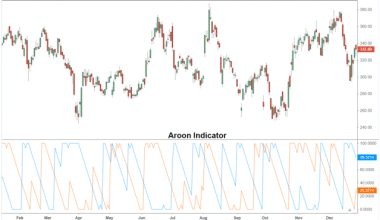In the competitive landscape of manufacturing, the efficient management of revenue is a cornerstone for success and sustainability. Companies constantly strive to identify and prevent financial loss, where unaddressed, can lead to significant declines in profitability. Unraveling the complexities of revenue leakage is crucial for manufacturing firms wanting to maintain an edge in the market. Below, we explore strategic approaches to tackle this pervasive industry challenge and preserve hard-earned income.
Understanding Revenue Leakage in the Manufacturing Sector
Revenue leakage refers to the loss of potential or actual income due to inefficiencies and gaps in a company’s operations or business processes. In manufacturing, this can result from numerous factors including production waste, suboptimal pricing strategies, and inadequate contract management. Each undetected inefficiency chips away at the profit margin, often going unnoticed until they add up to significant figures.
Another form of revenue loss often overlooked is through inventory disparities and the misuse of resources. When products or materials are overstocked or go missing, the financial implications can be considerable. To enhance revenue retention strategies, companies must stay vigilant and responsive to changing market dynamics. Resources like ways to stop revenue leakage provide invaluable insights into closing those costly gaps that can make or break a manufacturer’s financial health.
Implementing Strict Quality Control Measures to Curb Losses
Quality control is a critical defense against revenue leakage. Ensuring that all products meet the desired standards minimizes returns, warranty claims, and customer dissatisfaction. Each of these areas presents a potential for revenue loss, not only in terms of immediate financial impact but also through harm to brand reputation and customer loyalty.
Manufacturers can bolster their quality control efforts by integrating robust inspection protocols at different stages of the product lifecycle. From the moment raw materials are received to the final pre-shipment checks, thorough quality assessments must be in place. This level of scrutiny helps prevent defective products from reaching the consumer and the subsequent financial losses.
Moreover, the usage of protective materials, including plastic pipe caps, during shipping and handling processes, can prevent damage to goods, further reducing the loss of revenue through compromised product quality. The attention to detail in preserving the integrity of products as they navigate through the manufacturing and distribution phases cannot be underestimated.
Streamlining Inventory Management to Prevent Overstocking and Shortages
Effective inventory management is a delicate balance that can significantly influence a manufacturer’s revenue. Overstocking ties up working capital in unsold stock, which can become obsolete or exceed storage costs, while understocking can result in lost sales opportunities and dissatisfied customers. Detailed inventory analysis and forecast-based planning are necessary to mitigate these risks.
Advanced inventory management systems come into play here, enabling real-time monitoring and automatic reordering to maintain optimal inventory levels. By utilizing such systems, manufacturers can minimize the likelihood of excess stock and ensure they are not caught short of popular products. This is not only a win for the bottom line but also for customer satisfaction and company agility.
It’s also essential for manufacturers to collaborate with their suppliers and distributors to refine their inventory management strategies. By sharing data and forecasting, all parties in the supply chain can contribute to more accurate inventory levels. This shared approach reinforces the resilience of the supply chain and reduces the financial impact caused by mismanaged stock levels.
Investing in Advanced Technology for Tracking and Analytics
Technological evolution has ushered in capabilities like the Internet of Things (IoT) and artificial intelligence (AI) that are transforming how manufacturers handle revenue leakage. Investing in advanced technology systems that facilitate real-time tracking and analytics can lead to profound improvements in understanding and controlling potential financial drains.
Real-time data tracking allows manufacturers to monitor their operations closely and to respond swiftly to any discrepancies or inefficiencies. Sensors on the production line, for instance, can detect and report faults immediately, minimizing downtime and scrap rates. This level of operational intelligence feeds into more informed decision-making and timely problem resolution.
Moreover, analytics engines can process this data to reveal deeper insights into production trends, waste patterns, and even predict future anomalies. By proactively addressing these areas, manufacturers can save significant amounts in would-be lost revenue.
Altogether, the journey to curb revenue leakage in manufacturing is multifaceted, and it demands a sustainable, integrated approach to quality control, inventory management, technology, and human resources. Overall, by tapping into these different facets of operations, manufacturers stand a much better chance of plugging the leaks that inhibit growth and profitability.






